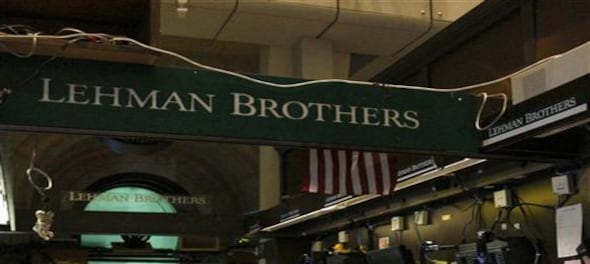
Ten years ago, on September 15, 2008, America's fourth-largest investment bank Lehman Brothers filed bankruptcy. With total debts of $613 billion against total assets of $639 billion and 25,000 employees worldwide, Lehman's bankruptcy was said to be the largest in the history, surpassing that of Worldcom's and Enron's.
Lehman Brothers' crisis further led to global financial crisis that year with the development hitting several economies as global markets plummeted immediately. Several countries had to face the heat as the company's collapse pulled down confidence in banks across the world. This included India's then largest private lender ICICI Bank too.
We take a look at how Lehman Brothers' downfall affected India
ICICI Bank hit hard
Immediately after the news of Lehman Brothers' bankruptcy broke, investors rushed to sell the bank's shares, pulling the stock down by 10 percent to Rs 565. This was due to ICICI Bank's London subsidiary having 57 million Euro (about Rs 375 crore) exposure in the bankrupt company.
"ICICI Bank UK Plc holds 57 million euro of senior bonds of Lehman Brothers Inc...Potential losses are not material," the bank had said in a statement.
KV Kamath, managing director and CEO and Chanda Kochhar, joint managing director and CFO, came out with clarification stating that the bank was very much in sound position and that there was no need to panic.
Kochhar clarified that the exposure constituted less than 1 percent of subsidiary ICICI Bank UK Plc.’s total assets and less than 0.1 percent of the consolidated total assets of the ICICI group.
Nevertheless, investors and customers paid no heed to the statements as rumours did the rounds indicating that the bank was in trouble with major financial crunch.
However, ICICI Bank was not the only Indian lender with exposure to the US company. According to a Mint report, State Bank of India and Punjab National Bank (PNB) also had exposure. As per the report, analysts, on condition of anonymity, told that SBI had an exposure of around $55 million (Rs 256 crore), while PNB $5 million. However, the two were affected mildly.
Impact on Indian market
Fall in ICICI bank shares in India and the Dow Jones index in the US further affected Indian stock market. Dow plunged more than 500 points or 4 percent on the day of bankruptcy filing, its worst point drop since the September 2001 terror attacks.
Further, within three months of bankruptcy filing, the BSE Sensex dropped 60 percent to 8,535 from around 21,000 levels due to global finance crisis, mainly caused by Lehman collapse.
New governor, new challenges
In less than a month after he took over as the governor of the Reserve Bank of India, Duvvuri Subbarao, faced what came as a massive challenge for him as well as other central bankers, Lehman bankruptcy. However, Subbarao, being new to the world of central banking had fears over the handling of such situation.
“It will be dishonest to say I had no fears, concerns or anxiety at the time,” he was quoted by Bloombergquint.
Among the challenges that the central bank faced, it had to keep the markets going and deal with the rumours of ICICI's crunch as well as liquidity squeeze.
"It was like a big earthquake in the global financial sector and we saw some tremors in India too. There was concern about how our financial sector will react, what action the RBI has to take and what kind of developments will come from this…It was day in New York and night time for us," he said in a recent interview with The Economic Times.
In terms of immediate action, the governor issued a statement in midnight saying that the central bank was watching the situation closely.
According to Subbarao, as he told ET, not only did the RBI reacted to what was happening in the markets, it also reacted to what advanced economies did as a measure.
"We did both the conventional and unconventional things. By conventional, we cut the SLR and CRR. We made foreign exchange liquidity easier by liberalising norms for ECB and NRI inflows and we cut interest rates by as much as 1 percent which was unprecedented. By unconventional measures, we gave lines of credit not only to banks but also to mutual funds and NBFCs," he said.
Fall in India's GDP
The country's GDP growth was hit severely with the rate dropping to 6.72 percent in 2008-09 from the previous rate of 9.32 percent.
First Published: Sept 12, 2018 2:35 PM IST
Check out our in-depth Market Coverage, Business News & get real-time Stock Market Updates on CNBC-TV18. Also, Watch our channels CNBC-TV18, CNBC Awaaz and CNBC Bajar Live on-the-go!


Stampede-like situation disrupts Rahul Gandhi, Akhilesh Yadav's joint rally in Uttar Pradesh
May 19, 2024 4:26 PM
Ladakh Lok Sabha election: With Independent candidate's entry, it's now a 3-way contest for BJP and Congress
May 19, 2024 4:01 PM

